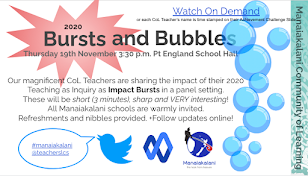The catalytic aspect of student learning my inquiry focused on this year was a strong need to improve reading comprehension and poor vocabulary in our junior classes.
At the beginning of this year, I identified this as my inquiry focus after analyzing my new class data and discovering that most of my Year 2 students were well below the expected levels both in reading and writing. My year 3 students were working at different levels; however, many of them experienced a ‘summer drop’ and required lots of support and immediate actions to improve their outcomes.
To build a rich picture of my students’ learning in literacy, I used Running Records, e-asttle, vocabulary and spelling tests, a range of formative assessments of their reading and writing across the curriculum, and student voice.
The weakest aspects in their literacy learning that I identified during the profiling phase were a lack of comprehensive strategies, poor vocabulary and limited general knowledge.
The profiling of my own teaching showed that I had strengths in designing various cross-curricular projects and effectively pulling deeper learning out of them using the Learn-Create-Share pedagogy.
After analysing and evaluating my students’ profiles, consulting with the literature research, reading blogs of my COL colleagues and reflecting on my own teaching practice, I finalised and implemented the following interventions:
Designing authentic LCS projects taking into account their cultural and personal identities
Using digital and traditional tasks designed to improve their vocabulary and reading comprehension at the appropriate levels.
Creating a culture of blogging and commenting (new to our junior school).
Implementing drama activities that according to the literature research are ‘giving students the chance to use all skills in decoding and comprehension, expand vocabulary and build metacognitive knowledge’. I believe this led to our success during the Manaiakalani Film Festival.
These changes allowed my Year 2/3 students to take ownership and responsibility for their own learning, explore, take risks, make mistakes and learn from them. For example, my young students created their own Kahoot quizzes and riddles. To be able to successfully participate in such high-thinking level activities, the students had to research, process, design and present their learning. They got so extremely excited that I couldn’t stop them even during the school holidays!
Overall I would rate the changes in student learning as highly positive, evident and measurable. The evidence for my rating is supported by the data collected in Term 4 both in reading and writing along with huge improvements in their key competencies, growth mindset and achievements. All of my students showed great progress and the vast majority are working ‘at’ or ‘above’ the expected levels including four boys and two girls from my control group.
Coherence in putting my students at the very centre of their learning and developing cognitive engagement and critical thinking across the curriculum was my hunch and it proved to make a difference during both in-class and online learning.



